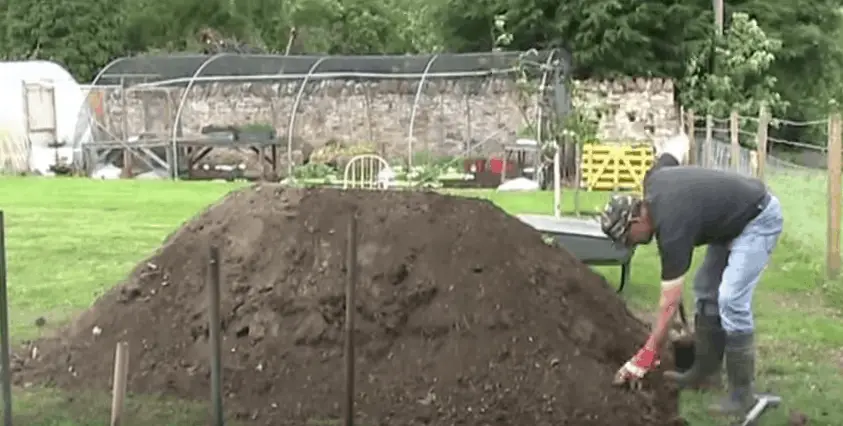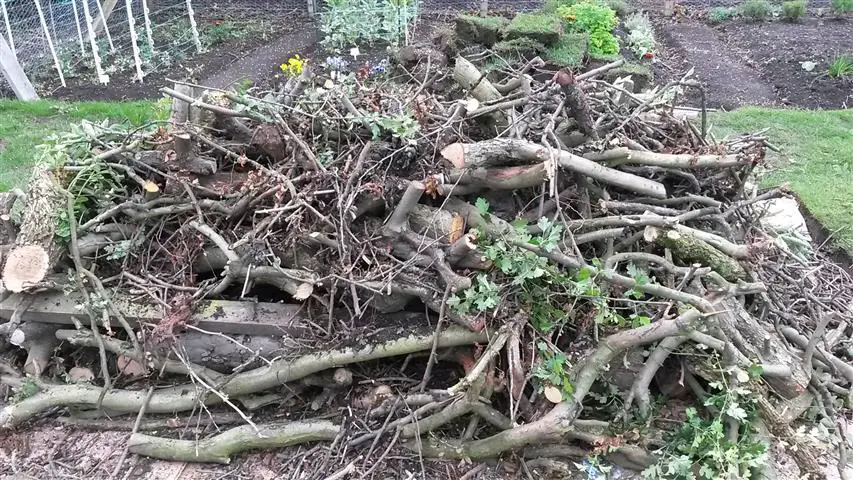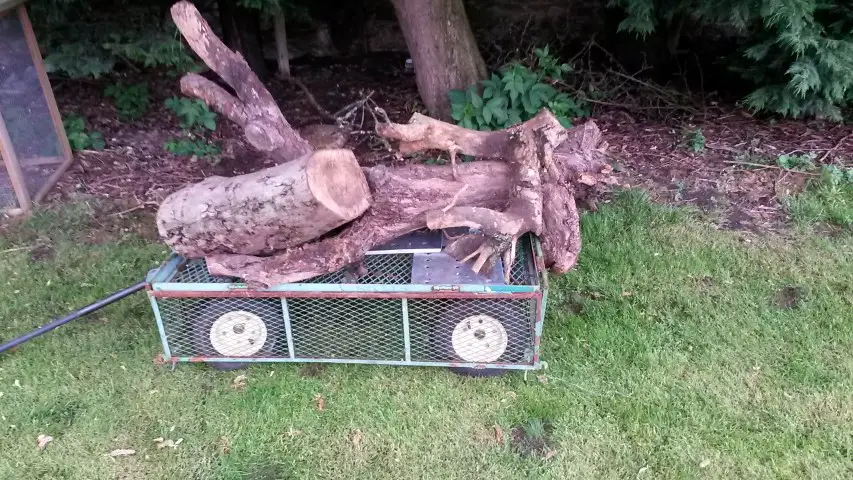
What Is A Hugelkultur Raised Bed
The Hugelkultur (meaning hill culture) pronounced “Hoo-gel-cool-toor” is an idea that originated in the Black Forest of Germany as far back as the middle ages.
A Hugelkultur is a mound constructed by gathering a pile of sticks and forest waste to form a mound that is then covered in topsoil. Large timbers at the base and smaller as it grows to over 3 foot high.
This mound of ‘green’ and ‘brown’ organic material (explanation here) then composts down to form a self-irrigating growing platform or Raised Bed area where all kinds of vegetables or flowers can be grown.
*UPDATE: Listen while you go – Hugelkulter 11 Audiobook
How Long Does A Hugelkultur last?
The lifetime of a Hugelbed is in the region of ten years plus. This depends on many things such as regional humidity and the construction of the Hugelbed itself.
If a good base of heavy timbers is added at the beginning, then these will produce moisture and compost as the heavy timbers slowly rot down over many years. This means that once your Hugelbed is built, then all you need is regular maintenance to keep it productive – just like any other vegetable garden but more applicable perhaps to a keyhole garden (link to our article on keyhole gardening).
How Does Hugelkultur Work
The Hugelkultur growing method works by a combination of composting and enzyme production. This natural wood decaying process breaks down the cellulose in the wood leading to tiny cavities, and forming a wet sponge-like material.
breaks down the cellulose in the wood leading to tiny cavities, and forming a wet sponge-like material.
When the heavy timbers begin to take this form (usually after the second year) then the mound becomes self-irrigating as the spongy wood gathers and collects from the atmosphere.

What Kind Of Wood Works Best In A Hugelkultur
The best kind of wood for a Hugelkultur is any timber that is not naturally rot-resistant, and will decompose at a steady rate.
Trees to include in a Hugelbed include..Birch, Apple, Alderwood, Willow, Poplar, Maple, Pine (without the needles), sycamore, most softwoods and even shrubs for smaller sticks.
Trees NOT to add to the Hugelbed is rot-resistant types like Oak, Cedar, Black Walnut, Black Locust, California Redwood, Black Cherry, and any old heartwood.
Main Benefits of a Hugelkultur
- Cheap to make with fallen forest debris and lawn cuttings, kitchen scraps and cardboard
- Ideal for hot dry climates as the bed becomes self-irrigating after 2 or more years
- No need to buy expensive plant food as the Hugelkultur is in effect a ‘living’ compost heap full of nutrients
- A hugelkultur is great for the environment and a productive way to dispose of old organic matter from the Autumn fall
- The Hugelkultur is easy to manage being in effect a Raised Bed or mound that you do not have to hurt your back bending over
6 Advantages of HugelKultur Gardening
1: It’s cheap! Being created primarily with lumber from fallen trees, thinning’s from the forest, forest floor debris, or even cuttings from construction timber (untreated).
Other materials Including Grass cuttings, turf, topsoil (more on material ingredients later), should be cheap to obtain or even on-site.
A quick search around your own area will more than likely produce all the materials for minimal or zero cost.
2: Years of free growing: Fertilizers (especially organic) and composting materials can be expensive to purchase, and really add to the overall cost of producing your own vegetables. This is no longer an issue with a Hugelkultur bed.
This system will continue to compost down for up to 20 years, depending on the size of the mound and the timbers used to make it. This means no need for fertilizers, and only an occasional toping-up of the soil (more on this later) to maintain your perfect growing area.
Hugelkultur On Amazon
3: Ideal For Hot Dry Climates: Through the process of decomposition timber becomes very porous and sponge-like. This means that it absorbs and retains huge amounts of moisture – making it ideal for dry, arid climates.
This process of decomposition will take more or less time, depending on the age of the timbers used and other factors that will be explained in later, relevant chapters.
This also means that during times of water shortage, or indeed for the water-waste conscious individual, a Hugelkultur bed is a no-brainer in many ways.
For this reason a Hugelbed is widely known to be self-irrigating and has little or no need for continual watering. Once or twice a season is all that is needed for a Hugelbed that is well established.

4: Great for the environment: By creating this type of garden bed, you are replicating what is being done 24/7 in the natural world.
The cycle of decomposition, to soil creation, to growth, produce, and harvest, then decomposition again; continues as it does in the natural world.
5: Longer growing season: Similar to Raised Bed systems or indeed Straw Bale gardening techniques; Hugelkultur beds warm up due to the process of decomposition.
Couple this with the fact that they are raised up from the cold surroundings, means that the growing season can be significantly extended.
6: Easy to manage: Since there is no digging at all involved with this system, it immediately has an advantage over traditional row gardening methods.
Added to this is the fact that the bed can be up to 6 foot high in the centre, which means there is very little bending over involved when it comes to maintaining your harvest.
If you cover the whole lot with a compost mix such as you would in a Raised Bed or Square Foot garden, then you will have no weeds to worry about at least for the first year or so.
This compost will also give your veggies a quick start until the composting process gets into full swing in the Hugelkultur.


